Have you ever been aware of the defensive duo?”
Generally, when we talk about a two-person relationship, we often refer to an attacking duo, and rarely do we think about a defensive one, don’t we?
However, given that offense and defense are inextricably linked, a lot of essence is packed into the defensive duo.
This article describes the basic defensive group tactics of the defensive duo.
- Two-person defense is the basis for defending in place.
- offense and defense are two sides of the same coin
- The aim of the attack is to create a close - far -> the defense prevents this.
- The point where the defense gets the ball.
- Interlocking defenses (challenge & challenge)
- What to do when a close-distance relationship is about to be created
- Utilization of the third person: the defensive triangle
- summary
Two-person defense is the basis for defending in place.
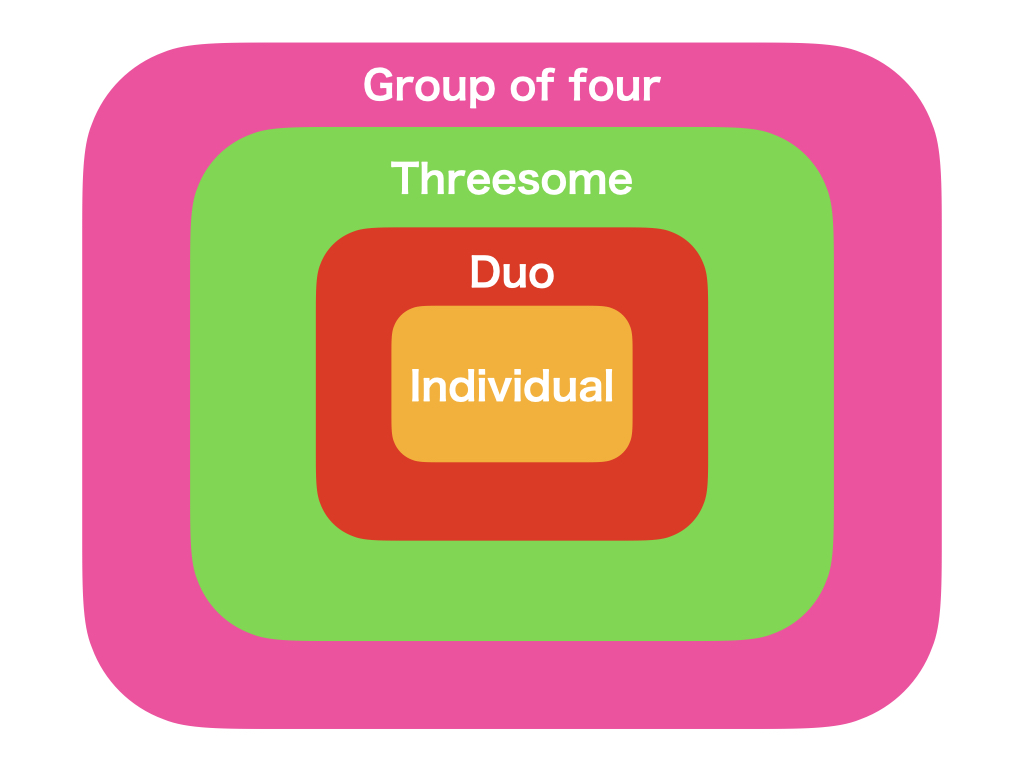
The group tactic is an inclusive relationship as shown in the diagram above,
The key is to organize in the following order: individual > 2-person group > 3-person group > 4-person group.
Even if you only work on a token four-man team tactic, if the individual players are fragile, you will not be able to play good defense.
offense and defense are two sides of the same coin
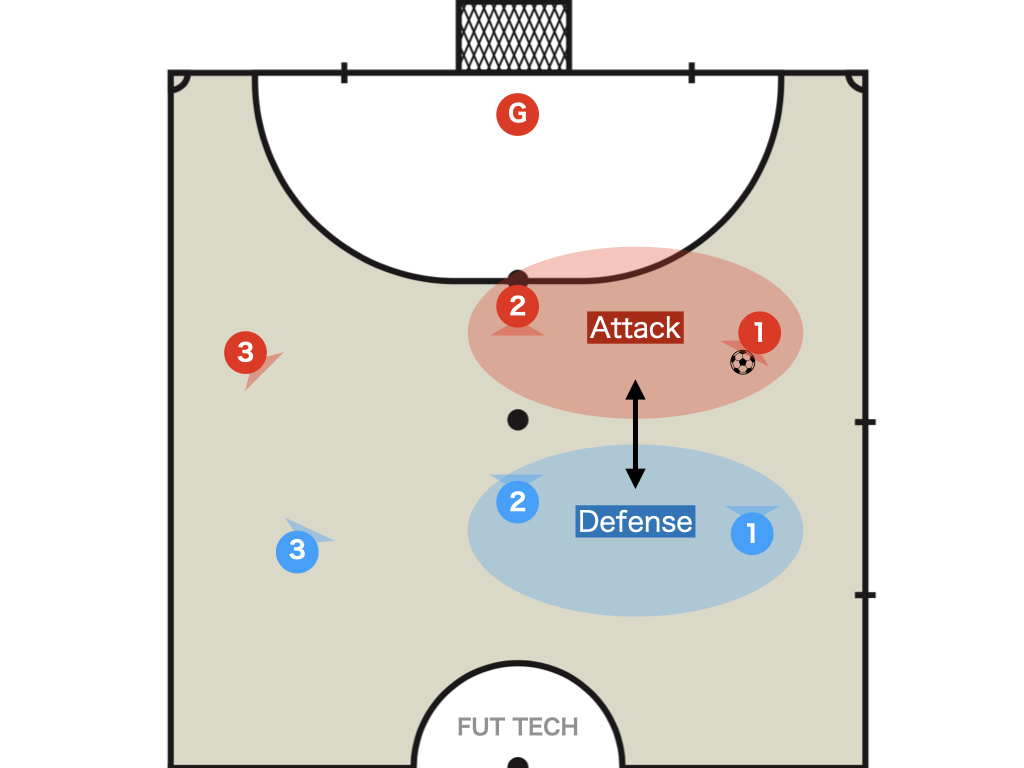
Because football is inextricably linked to offense and defense, knowing the offense leads to knowing the defense.
Knowing the aim of the attack will make it easier for the defense to know what to be aware of.
If you have not yet read the ↓ article, I recommend you do so.
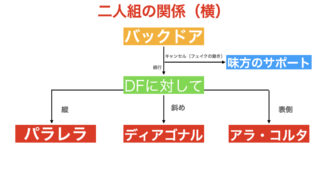
The aim of the attack is to create a close – far -> the defense prevents this.
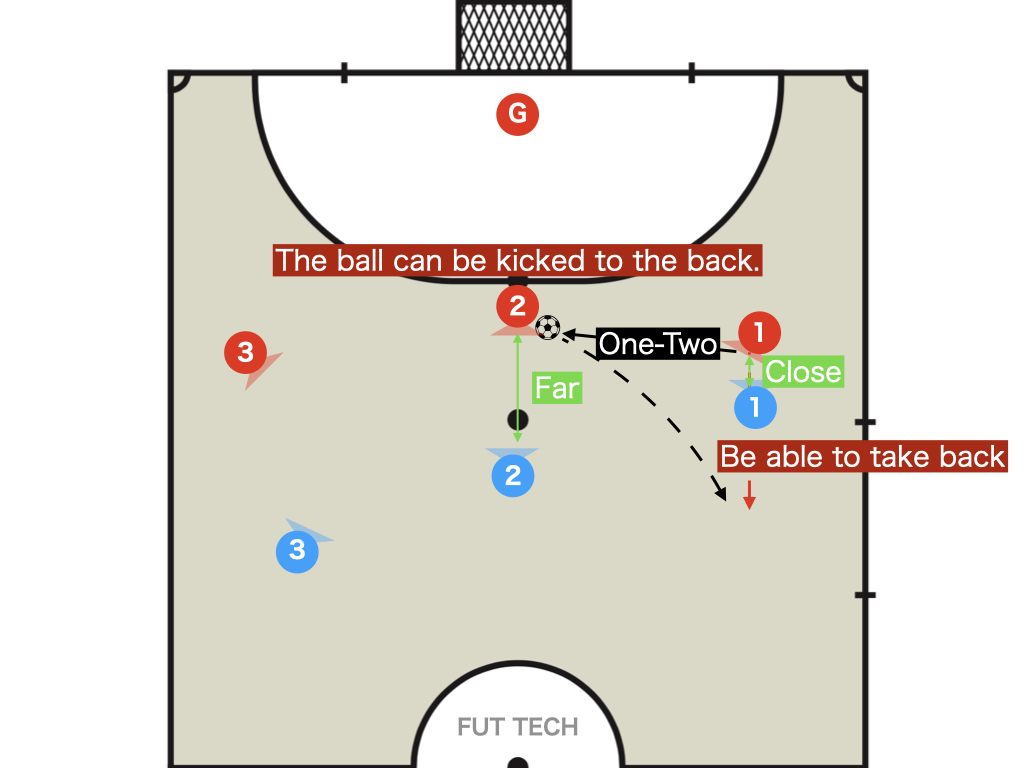
Attacks areClose (can get behind)ーFar away (ball can be kicked to the back)The main goal is to move forward by creating a state of
Conversely, the defense must never allow this phase to be created.
The point where the defense gets the ball.
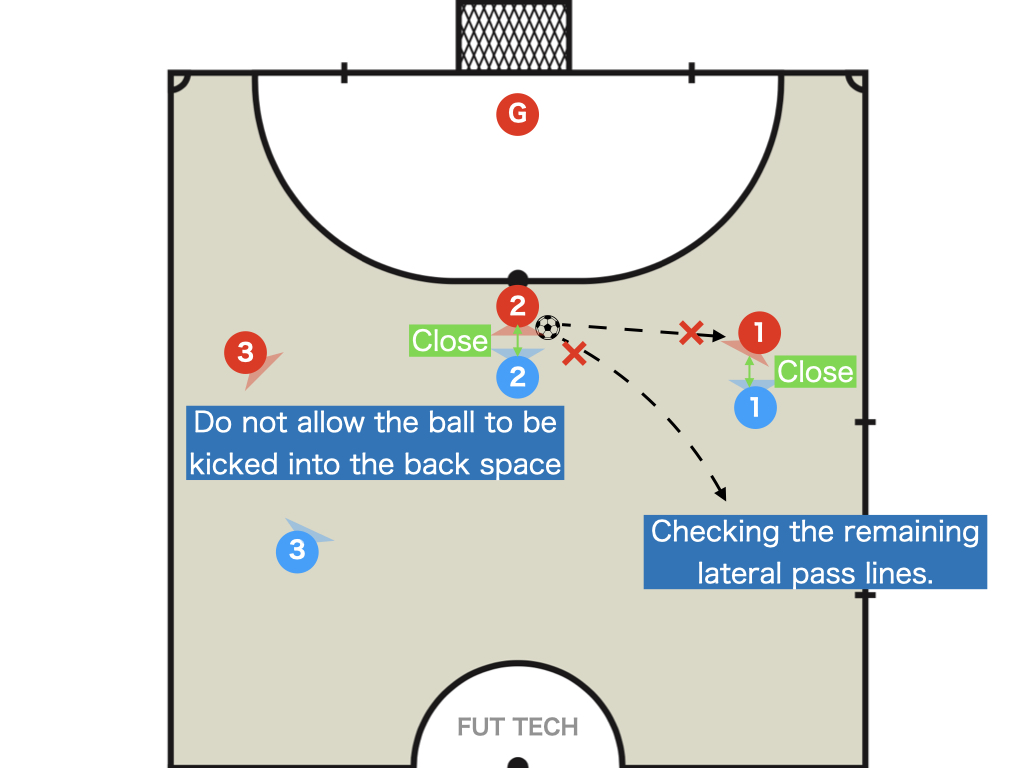
As for the point where the defense gets the ball.Close – closerelationship and be aware of the following two points.
In this way, the 1st and the 2nd press forward at the same time to press and fit together.Challenge & ChallengeHe says.
- The person who presses the ball carrier (1st-DF) isDo not allow the ball to be kicked to the back (limited)
- Non-ball holder’s mark (2ndDF) remainsChecking lateral passing lines (Zone DF)
This 1st-DF received “closeThe situation calledOne arm (for one arm)It is common for the distance between the two to be as close as possible to the distance between the two.
This article expressed the situation from a physical and distance perspective, but a mental (mental) perspective could also be considered.
Even if you are not able to get close enough in terms of distance, if you make yourself look big or your footsteps and voice make the opponent think that you are getting close, they will not be able to play as usual.
This phenomenon is generally referred to as “applying pressure.
Interlocking defenses (challenge & challenge)

Once the 1st player is pulled over by the ball carrier, it is important for the next DF to work together and do their best to pull over while the ball is on the move in order to defend in place.
If this is not done in tandem, the opponent (attacker) will create a near-distance relationship and easily get behind the attacker.
What to do when a close-distance relationship is about to be created
The first team is pulled in, but the second team cannot link up well, which often results in a close-distance relationship that allows the defensive line to be breached.
Since the goal of the attack is to create a near-distant relationship to make progress, it is important to prevent this situation from being created.
The 1st will recognize that the 2nd will not be ready in time and back down.
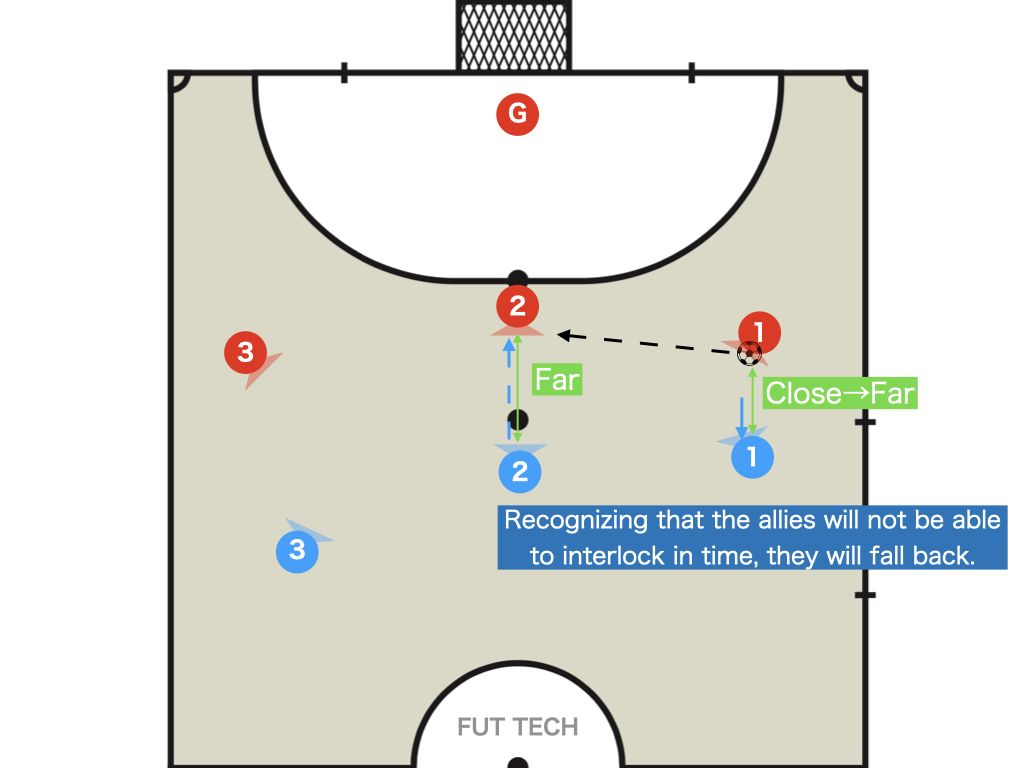
This situation can be described as a phenomenon in which only the 1st defender pulls over to the ball carrier.
In the first place, such a situation means that it is useless for the 1st team to approach because the allies are not interlocked.
At what point do you start pressing?”
Where do we set the press line?”
This phenomenon is less likely to occur if the team shares in advance the
2ndDF itself gives up the press and drops back.
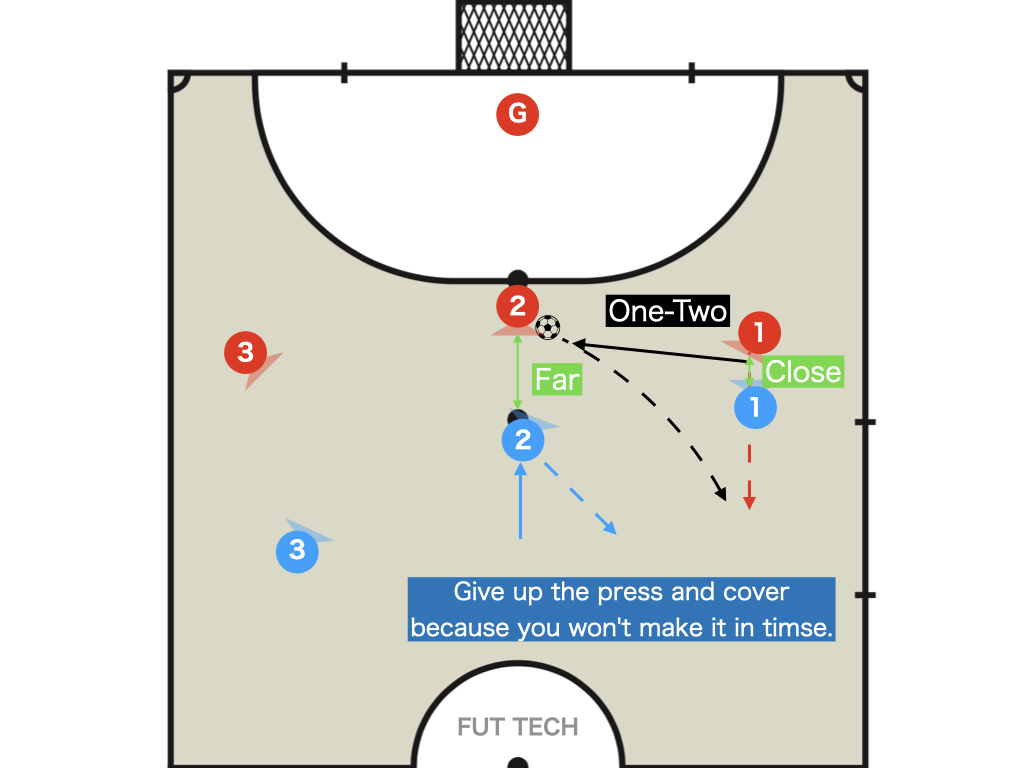
The 2ndDF should be able to work together to create a close – close situation, but they can’t get there in time, so they drop back.

The worst that should have been 2vs2 to 0vs2 or 0vs1 was also a crisis for blue #2 (2nd DF)
It can be done 2vs2 -> 1vs2 or 1vs1.
If you can successfully delay your opponent, the blue number 1 (the stripped 1stDF) can withdraw and reorganize the defense.
In this way, one person should go to press and the other should stay in cover.Challenge & CoverHe said.
This is a common tactic used in defending with two center backs (CBs) in soccer.
Stripped 1stDF pushes opponent with hand
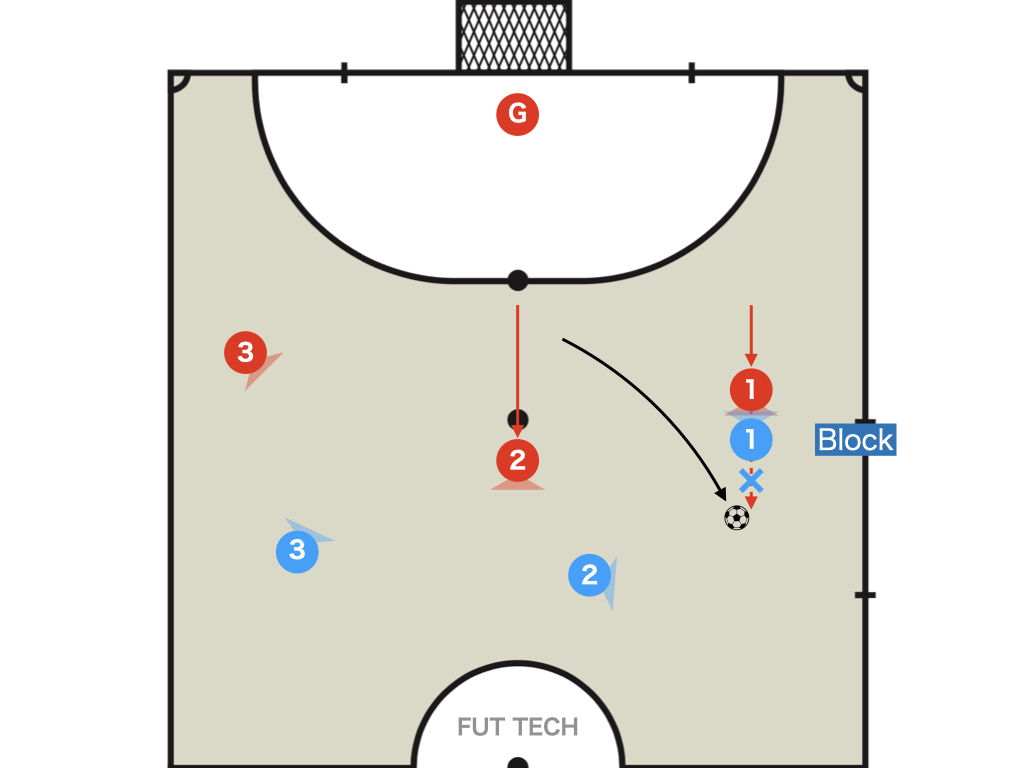
One method of dealing with an opponent who is about to one-two you is to block his advance by standing in his path or using your hands.
In some cases, fouls may be committed, so risk management must take into account the distance from the own goal, foul counts, and other factors.
Utilization of the third person: the defensive triangle
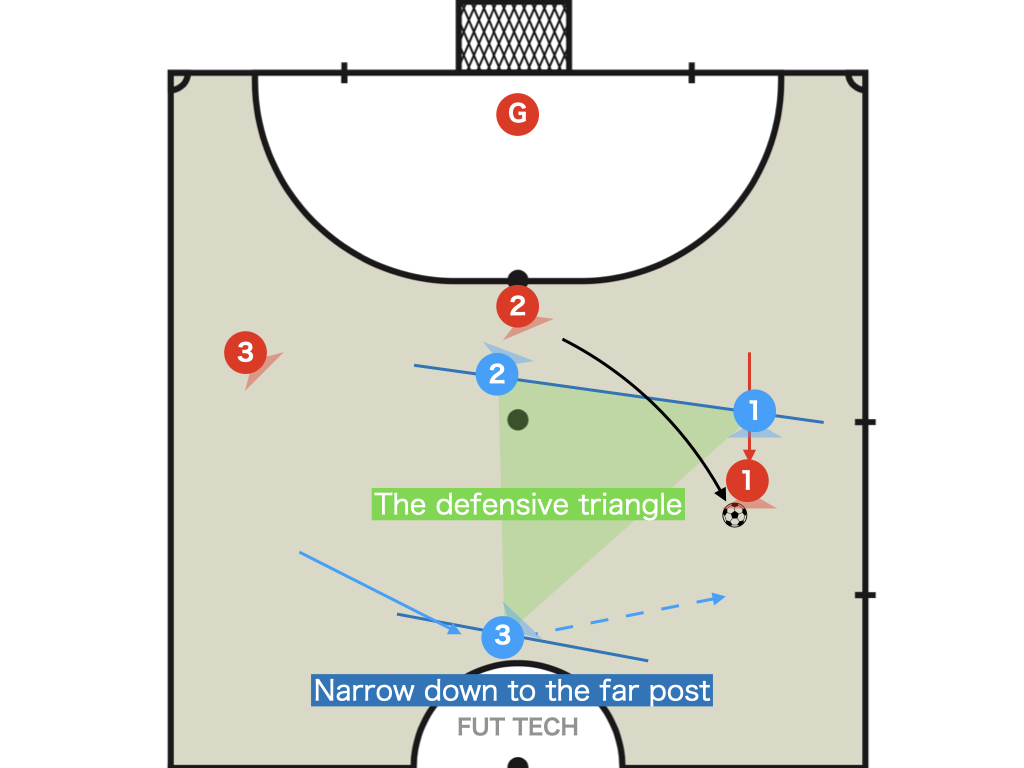
Even if two cannot defend, if the third (reverse alla) squeezes (float) and covers (float), the three can defend.
Such triangle DF is a well-known tactic implemented by many teams.
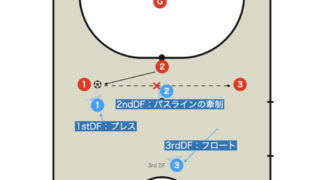
summary
For those who are familiar with the triangle defense, you may be thinking, “Two defenders?” However, it is important to first defend with the first and second defenders, rather than relying on the third and fourth defenders from the start, to ensure a solid defense.
In other words, if you can protect an individual > 2-person group > 3-person group > 4-person group in order of priority, that is the best way to go.
We hope that this is an opportunity for you to work on the quality of your defensive duo with a little more concern.
Thank you very much for reading this article to the end.
If you found this article useful, please consider sharing it using the social media share buttons above.
We regularly share valuable insights on futsal tactics on Twitter, so if you haven’t followed us yet, we’d appreciate your support!
We are committed to raising the level of futsal in Japan by sharing high-quality information through discussions with individuals who have coaching experience in the F.League and overseas.
If you have any questions or notice any mistakes, feel free to leave a comment below.
We update our articles regularly, so if you’d like to keep reading, please bookmark our site or search for “FutTech”!


